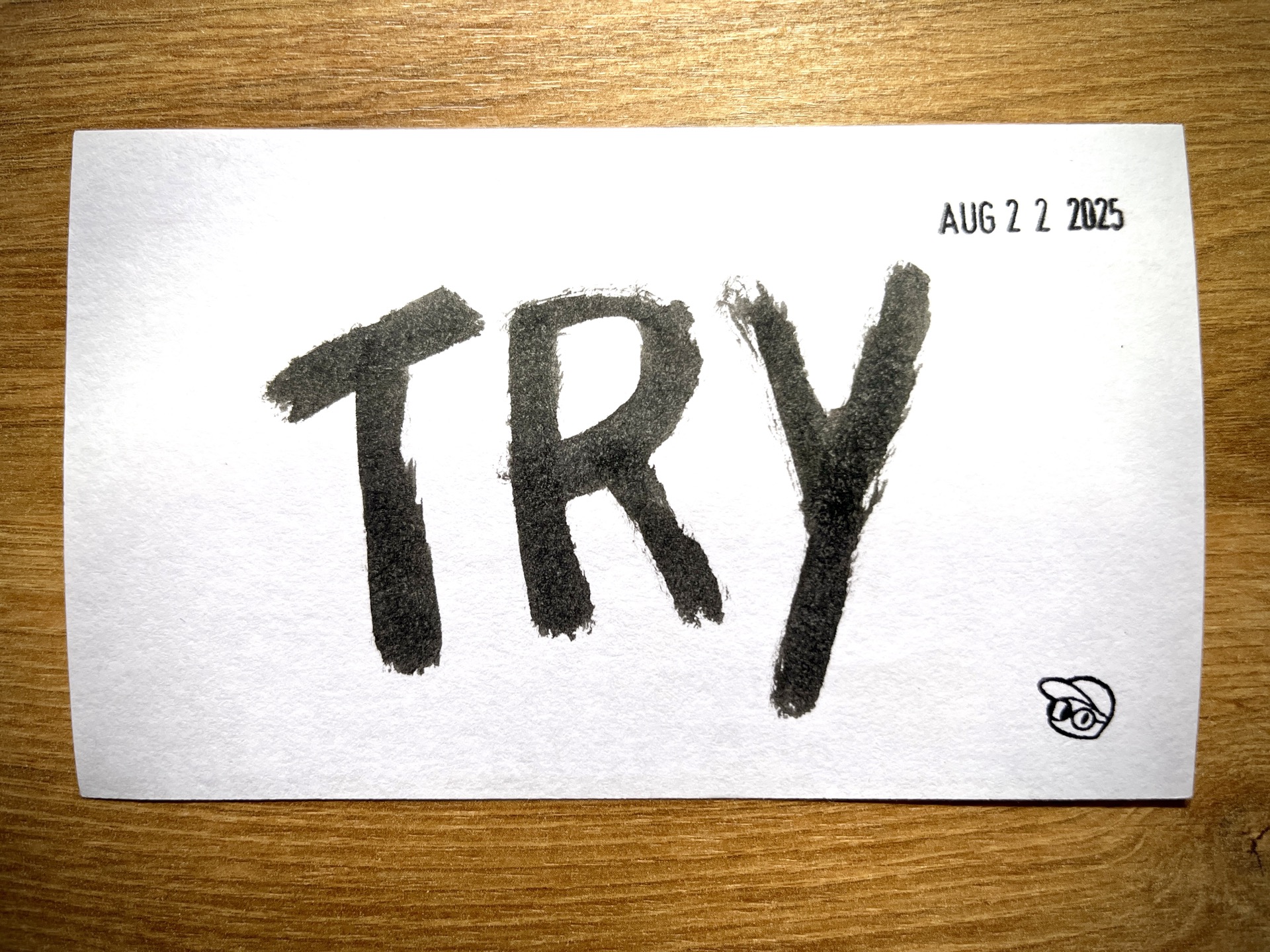Recently, I was reminded how often I just… try things. Dive in. Tinker. Get my hands dirty. Not because I know it’ll work—but to see if it even can.
In life, that’s always come easy. (Well, easier). Little experiments. Low stakes. Fun, if you ask me.
But at work? That wasn’t always the case. At work, I held back (a lot).
Not ready!
For a long time, I played it safe. Too safe. I was afraid of breaking something, of doing a bad job, of… looking bad.
So I hid. Behind polish. Behind pixels. Behind code. I elevated craftsmanship—not always out of love for the craft, but to mask my anxiety. If it looked perfect, maybe no one would see how shaky I felt inside.
But perfection comes with a cost. Always. Time, yes—but more than that, it drained my confidence (and the confidence from others as well). Every hour spent polishing in secret only grew the anxiety. Like grade school again—shielding my test with my forearm, sweating over long division, muttering “not ready!” as if someone was dying to copy.
Looking back, there wasn’t one big event that shifted me. It was a collection of wins (big and small), compounded over years. A prototype that landed. A conversation that clicked. An experiment that worked just enough to move things forward. Each one chipped away at the fear, until I started to believe...
Maybe I do know what I’m doing. Maybe I can make a thing.
---
Sidenote: Years later, I still don’t think I really know what I’m doing. The only difference is—I try anyway. Back to the post.
---
That’s when I learned just how important trying was. I started thinking outside the box. Then I started thinking as if there was no box at all. I learned not just to prototype well, but to prototype fast. Really fast. And in doing so, I didn’t just see the momentum—I could feel it. Oversharing instead of hoarding. Getting things in front of people before I thought they were “ready”—duct tape, string, and all.
Because trying sparks conversation. The messy, sometimes uncomfortable, but the necessary ones. It burns through the “so-so” and the “hell no” ideas, leaving behind many “maybes” and a couple of “OMG YES.”
It pushes back the fog until a path—any path—starts to emerge. And from there, at least you’re moving.
Scout
It’s like scouting in StarCraft II.
The game is about collecting resources, building an army, and defeating the other player. But you can’t do any of that well if you don’t know where the other player is or what they’re doing.
You do this by sending one of your guys out somewhere on the map, hoping to stumble across the other player. Your little guy hangs around, pokes in now and then—and yeah, there’s a very good chance he’s going to die. That’s scouting. And you do it, in one form or another, the entire game. Skip it, and you’re playing blind. You won’t know what’s going on.
You'll just be making things in the hopes that you'll have enough to beat the other guy. Hoping your army is enough. Hoping you’re not countered. And hope is not a strategy.
The other player will always come when you least expect it. They’ll somehow have the thing you’re weak against. They’ll somehow had way more than you thought possible. They’ll somehow come at just the worst time... And they’ll beat you. Not necessarily because they’re better—but because they had information. They scouted. They tried something you didn’t.
Right
So how do you know what to try? What if there are too many things to try? How long should you poke at it before moving on? Is it even worth the effort?
The honest answer is it depends. But here’s the frame I keep coming back to:
Think about your project. If one thing doesn’t work, nothing else matters. Find that thing. Fast.
Throw spaghetti at the wall. Sketch the dumb version. Vibe-code a messy prototype. Hack something together in 5 minutes, 20 minutes, an hour. Enough to get a feel.
Then pause. Ask yourself: do I have enough information—and enough confidence—to commit? If yes, start building. If not, reset and try again.
That’s the loop. Try. Learn. Adjust. Try again.
“You can’t always make the right decision, but you can make the decision right.”
And the only way to get there—the only way to know—is to try. Early. Often. Messy. Relentless.
Because waiting won’t bring you clarity. Polishing won’t bring you certainty. The only thing that will… is trying.
